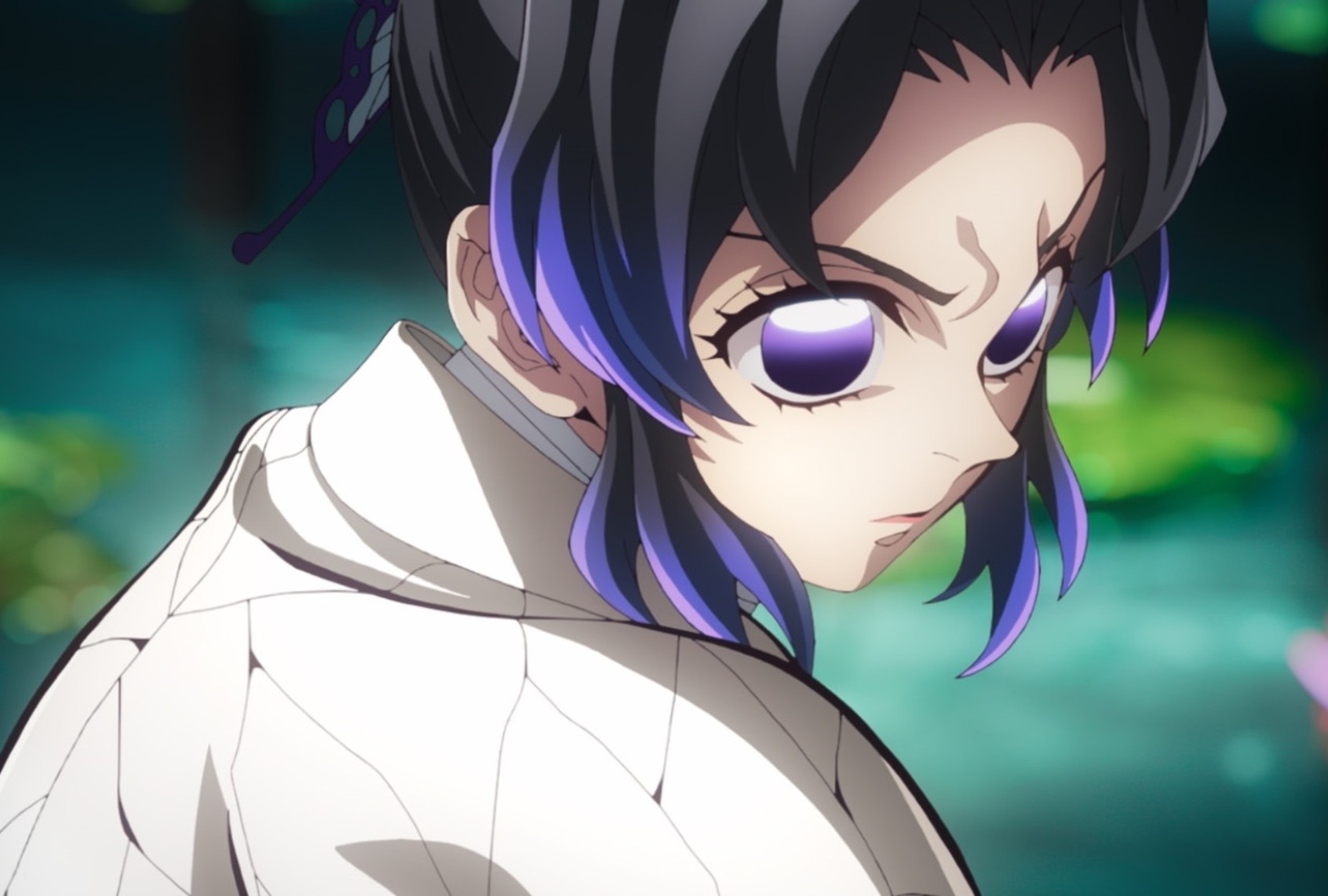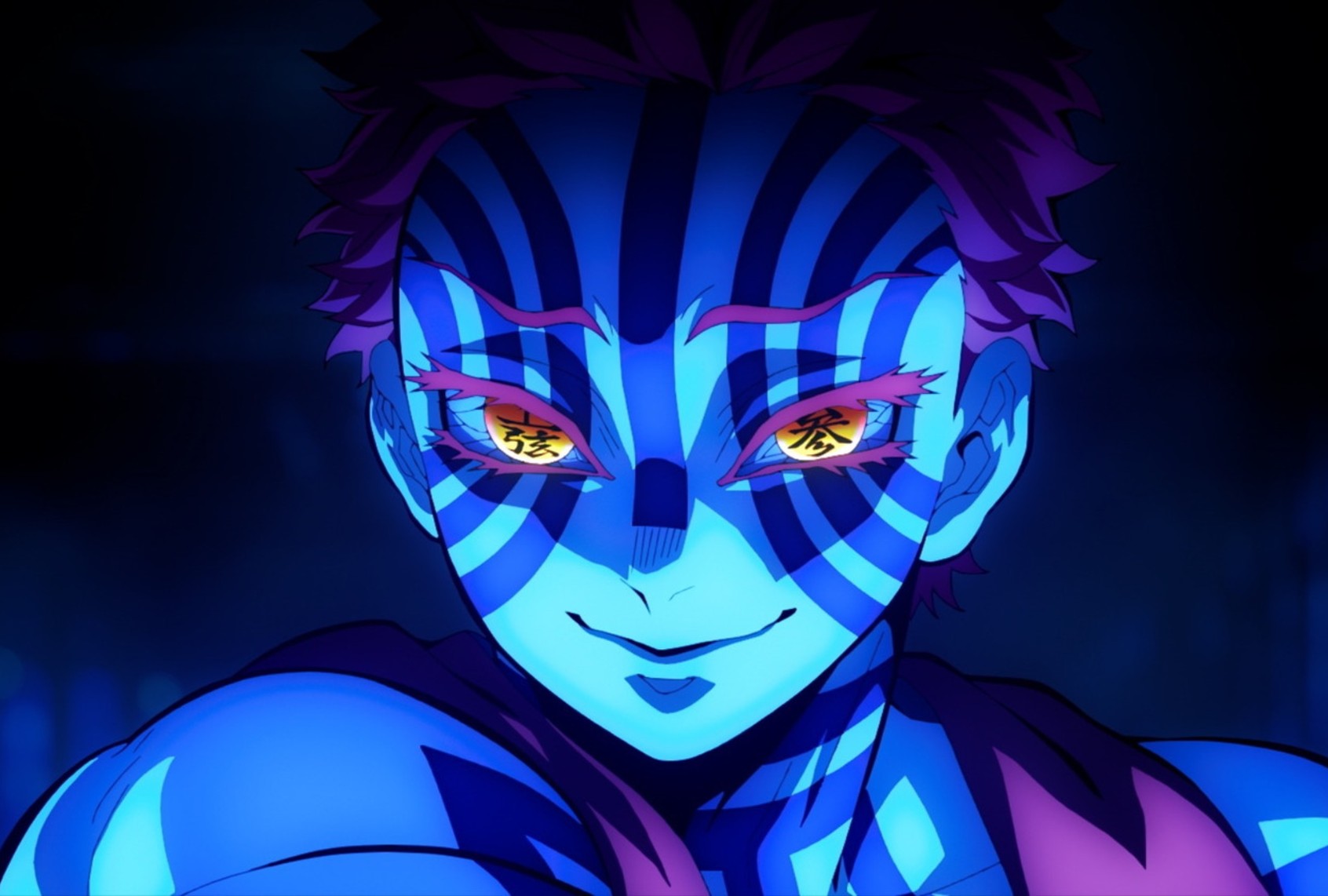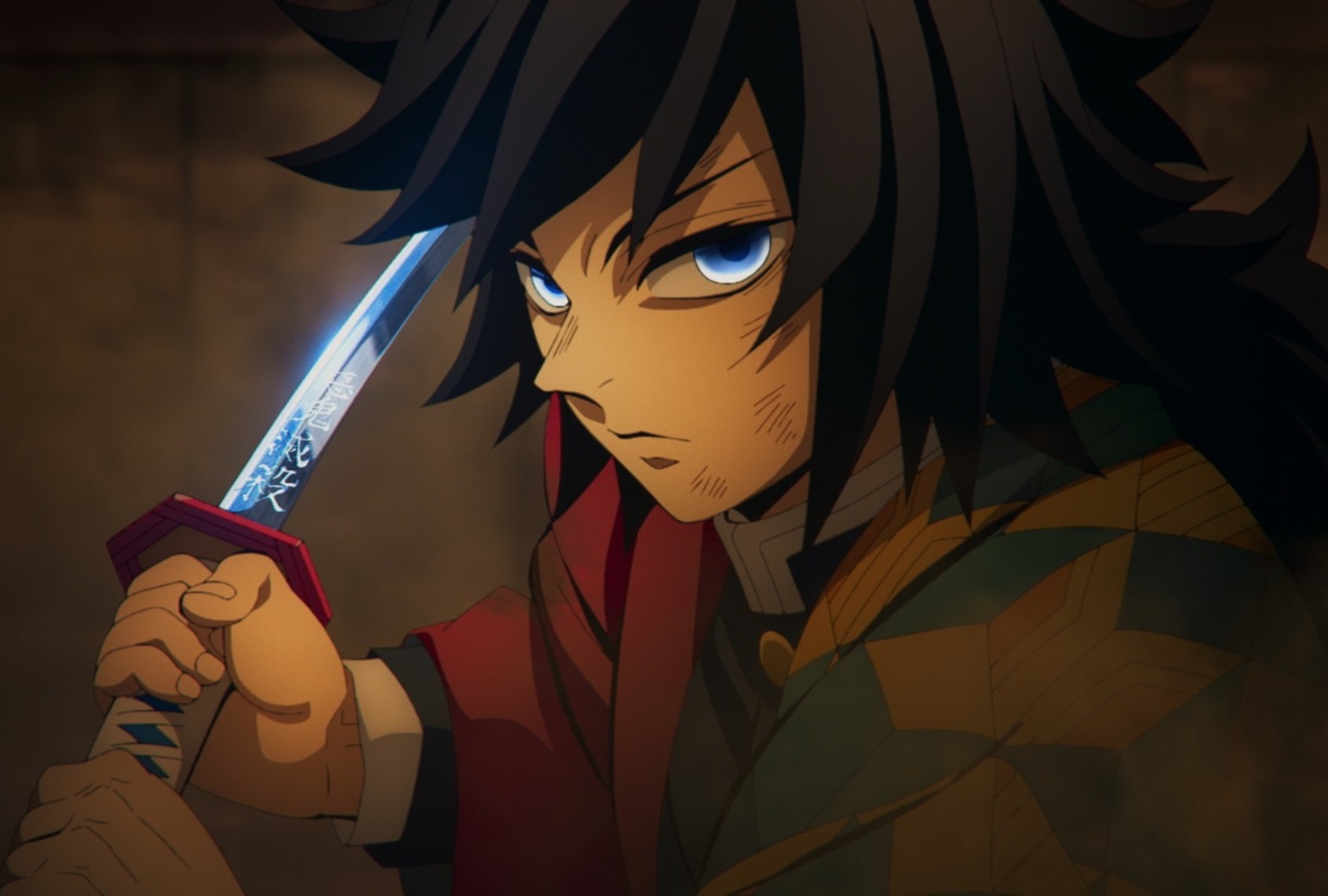While I may not be intimately familiar with “Demon Slayer: Kimetsu no Yaiba” — an anime franchise adapted from the hit Japanese manga of the same name, which had its latest film top the box office last weekend — I am familiar with a little movie called “The Devil Wears Prada.” Specifically, I often recall one throwaway line that has come to feel very prescient. Viewers might remember the scene where Meryl Streep’s fashion magazine editrix Miranda Priestley purses her lips at one of the ugliest dresses she’s seen in years, during a preview of a designer’s new collection. Just a few moments before, that fictional designer introduces the collection humbly, holding his hands behind his back, saying, “This season really began for me with the meditation on the intersection between East and West.” The line is supposed to be a little funny, a wink at the fashion industry’s love of effusive word salad descriptions that are only conveyed in the actual garments about half the time. It’s also a fitting nod to the waves of hyper-fixations Western audiences develop with Eastern culture. Much like with its grilled cheeses, Chanel boots and the decline of the print industry, “The Devil Wears Prada” remains scarily prescient when it comes to assessing our culture.
After “Demon Slayer: Kimetsu no Yaiba – Infinity Castle” dominated the box office over the weekend, some were left scratching their heads. “I don’t think anyone could see this coming,” Paul Dergarabedian, Comscore’s head of marketplace trends, told CNN this week. “We can easily call it a surprise hit.” And, to be fair, the amount of cash that “Infinity Castle” raked in is eye-popping. The film took home an estimated $70 million domestically, stomping all over the previous weekend’s equally surprising hit, “The Conjuring: Last Rites,” sending the other franchise film down to the second spot. That’s a 143% revenue increase compared to the $11.5 million opening of the previous “Demon Slayer” film, 2024’s “To the Hashira Training.”

(Koyoharu Gotoge/Shueisha Aniplex/ufotable) “Demon Slayer: Kimetsu No Yaiba Infinity Castle”
We’re not exactly in a period of cultural colonialism and fetishization; Gwen Stefani traded her Harajuku girls for heavenly grifts a long time ago. Rather, what we’re witnessing is the powerful growth in the domestic audience for East Asian media like “Demon Slayer.”
Perhaps the most interesting factor in the success of “Infinity Castle” is that it is the most successful theatrical anime opening in 26 years, following “Pokémon: The First Movie” in 1999. The late 20th century and early millennium saw a massive surge of anime popularity among Western audiences, with franchises like “Pokémon,” “Dragonball,” and “Yu-Gi-Oh!” becoming go-to staples in American households. Those sensations trended toward a broader embrace — and appropriation — of Eastern culture among American artists. (Gwen Stefani’s “Harajuku Girls,” anyone?) In recent years, American centrism and political conservatism have dug their claws back into the media. Now, it seems a new embrace, even obsession, with Eastern culture has hit stateside. And from “Demon Slayer,” to the little Labubus hanging from your bag, to the inescapable songs of “KPop Demon Hunters,” Americans are quietly signaling their fatigue with the tired predictability of Western media.
This isn’t to say that we’re exactly in a period of cultural colonialism and fetishization; Gwen Stefani traded her Harajuku girls for heavenly grifts a long time ago. Rather, what we’re witnessing is the powerful growth in the domestic audience for East Asian media like “Demon Slayer.” The original “Demon Slayer” manga published its first volumes in 2016 and, before long, garnered a large following in fandom-forward spaces like Tumblr. When the anime adaptation premiered in late 2019, the viral push barely preceded the onset of the pandemic and a licensing deal with Netflix, leading to a surge in anime viewership during a moment when many people had more free time to jump into new genres. The audience has grown exponentially since then, with Crunchyroll president Rahul Purini telling the Los Angeles Times that he believes anime is “as mainstream as you can get.” Considering that the English dub of “Infinity Castle” hooked Channing Tatum for a voice role after Tatum expressed his love of watching anime with his daughter, Evie — who walked the “Infinity Castle” red carpet alongside her father — it seems Purini isn’t just blowing businessman smoke. A cool $70 million is nothing to scoff at. Anime fans have real buying power, and it’s no shock that money is moving toward other Eastern-centric media too.

(Koyoharu Gotoge/Shueisha Aniplex/ufotable) “Demon Slayer: Kimetsu No Yaiba Infinity Castle”
What’s key to remember is that this new wave of hype surrounding East Asian media is less keen on whitewashing or objectifying than it may have been during previous eras. We’re seeing large-scale excitement for and incorporation of Eastern culture into American media. This new, increasing embrace has resulted in a fusion of East Asian culture with Western trends, best exemplified by the massive success of “KPop Demon Hunters.” Though produced by Sony — which also owns Crunchyroll — and sold to Netflix for distribution, “KPop Demon Hunters” has all of the bold flavor and outsized confidence of modern Korean pop acts like Blackpink and BTS, who hold massive American audiences. The animation style and language is Western all the way, but the story, themes and especially the songs align with Korean culture. That “KPop Demon Hunters” premiered on the same platform that houses “Demon Slayer,” along with other internationally popular anime like “Naruto” and “One Piece,” likely made it all the more of a boon.
Start your day with essential news from Salon.
Sign up for our free morning newsletter, Crash Course.
A Western centrist might argue that streaming accessibility is the main reason for this trend toward East Asian media. But it’s important to note that a movie like Pixar’s “Elio,” released in June to a paltry opening weekend of $30 million domestic on a reported budget between $150 and $200 million, was, by all standards, a flop. But when “KPop Demon Hunters” had a one-weekend theatrical sing-along release two whole months after its initial streaming release, the film still managed to rake in $18 million, ostensibly from an audience who had mostly already seen it. If it’s animated escapism that people are looking for in the dire state of the world, they’re clearly choosing to find it in East Asian and adjacent media over the predictable, safe and often conventional offerings from studios whose stories skew Western-focused.

(Koyoharu Gotoge/Shueisha Aniplex/ufotable) “Demon Slayer: Kimetsu No Yaiba Infinity Castle”
The amalgamation between West and East doesn’t always take. Last year’s “The Lord of the Rings” anime, “The War of Rohirrim,” performed poorly at the box office despite conceivably having two built-in audiences in anime fans and “LOTR” obsessives. Distributed by Warner Bros. during the typically high-performing holiday movie season, “Rohirrim” only brought in about $4.5 million during its domestic opening weekend, with an expectedly higher international performance. Still, that film is a fascinating indication of where anime can go, and the endless possibilities the genre has when it merges with existing markets and properties. If anything, the raging success of “Infinity Castle” should indicate to studios like Warner Bros. that anime has a far wider audience than anticipated, and that pushing a film with such a vast hybrid market could be worth the cost of marketing.
Of course, the Labubu — the most pervasive and easily knocked off trend in the new wave of Eastern-centric obsessions — hasn’t needed much more marketing than TikTok. The toys are everywhere, and Chinese retailer Pop Mart is swimming in dough. Even if experts weren’t steeped in the growing popularity of anime and East Asian culture in the film sector, one would think those sharp-toothed little creatures would be enough to signal that a film like “Infinity Castle” would be a success. While American obsession with East Asian culture does always come with the worry of increased racial fetishization, this wave feels far more celebratory than predatory. Americans want to spend their time and money on things that don’t feel so tinged with the sickly odor of United States nationalism, and they’re finding it wherever they can. So, if you find yourself looking at a box office phenomenon and thinking, “Who could’ve predicted this?” look around and you’ll probably see it coming from a mile away.
Read more
about the new obsession with East Asian and adjacent media


